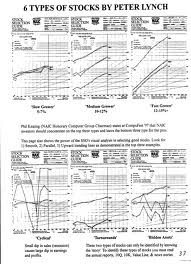Most investors make money by buying a security at a low price, then selling it later for a higher price. Owning a security is having a long position in that security. Selling short is a way to profit when the securities decline in price, by borrowing the securities, selling it, then hoping to be able to buy it back later at a lower price to replace the securities borrowed. However, if the securities pay a dividend or interest before the short is covered, then the short seller must pay those amounts to the lender of the securities.
In order to borrow the securities to sell short, the broker may lend out securities from the brokerage's own inventory, or from that of another brokerage, or he may lend out securities held in the margin accounts of other investors. If the broker is unable to borrow the securities, as sometimes happens with illiquid securities, for instance, then the security cannot be sold short.
A broker can lend out securities from the margin accounts of other investors, because the standard margin agreement allows it. When an investor opens a margin account at a brokerage, any securities bought for the account are held in the street name, the name of the brokerage for the beneficial interest of the investor and as collateral for any borrowing. The standard margin agreement allows the broker to lend out the securities held in its margin accounts to short sellers, and to be able to sell short, the investor must have a margin account.
Example—Profits and Losses from Selling Short.
An investor borrows 100 shares of XYZ stock that is currently trading at $35 per share and pays a 4% dividend, and sells it. Assume that the stock paid a dividend of $1.40 per share before the short seller covered his short. This puts $3,500 in the short seller’s margin account. $140 will eventually be deducted to pay for the dividend. If the price subsequently declines to $30, the investor can buy it back for $3,000 to return the borrowed shares, thus covering his short position, and netting $500 - $140 = $360 from the trade. If, however, the price of GM stock rises to $40, then the short seller will have to buy back the stock for $4,000, resulting in a net loss of $500 + $140 = $640. Brokerage commissions must also be subtracted from any profit or added to any loss. Note that for the same price movement of the stock, the loss from an unfavorable move is much greater than the profit gained from a favorable move
Before 1998, many investors sold short stocks that they actually owned—selling short against the box—as a means to protect capital gains, or to convert a short-term gain into a long-term gain, which has a lower tax rate. However, this method has been rendered ineffective by the Taxpayer Relief Act of 1997. Any short sale against the box after June 8, 1997, is considered a constructive sale by the IRS, and is subject to a capital gains tax in the year of the sale.
A large investor may also sell short against the box to prevent the disclosure of ownership in the security.
In order to borrow the securities to sell short, the broker may lend out securities from the brokerage's own inventory, or from that of another brokerage, or he may lend out securities held in the margin accounts of other investors. If the broker is unable to borrow the securities, as sometimes happens with illiquid securities, for instance, then the security cannot be sold short.
A broker can lend out securities from the margin accounts of other investors, because the standard margin agreement allows it. When an investor opens a margin account at a brokerage, any securities bought for the account are held in the street name, the name of the brokerage for the beneficial interest of the investor and as collateral for any borrowing. The standard margin agreement allows the broker to lend out the securities held in its margin accounts to short sellers, and to be able to sell short, the investor must have a margin account.
Example—Profits and Losses from Selling Short.
An investor borrows 100 shares of XYZ stock that is currently trading at $35 per share and pays a 4% dividend, and sells it. Assume that the stock paid a dividend of $1.40 per share before the short seller covered his short. This puts $3,500 in the short seller’s margin account. $140 will eventually be deducted to pay for the dividend. If the price subsequently declines to $30, the investor can buy it back for $3,000 to return the borrowed shares, thus covering his short position, and netting $500 - $140 = $360 from the trade. If, however, the price of GM stock rises to $40, then the short seller will have to buy back the stock for $4,000, resulting in a net loss of $500 + $140 = $640. Brokerage commissions must also be subtracted from any profit or added to any loss. Note that for the same price movement of the stock, the loss from an unfavorable move is much greater than the profit gained from a favorable move
Before 1998, many investors sold short stocks that they actually owned—selling short against the box—as a means to protect capital gains, or to convert a short-term gain into a long-term gain, which has a lower tax rate. However, this method has been rendered ineffective by the Taxpayer Relief Act of 1997. Any short sale against the box after June 8, 1997, is considered a constructive sale by the IRS, and is subject to a capital gains tax in the year of the sale.
A large investor may also sell short against the box to prevent the disclosure of ownership in the security.



























